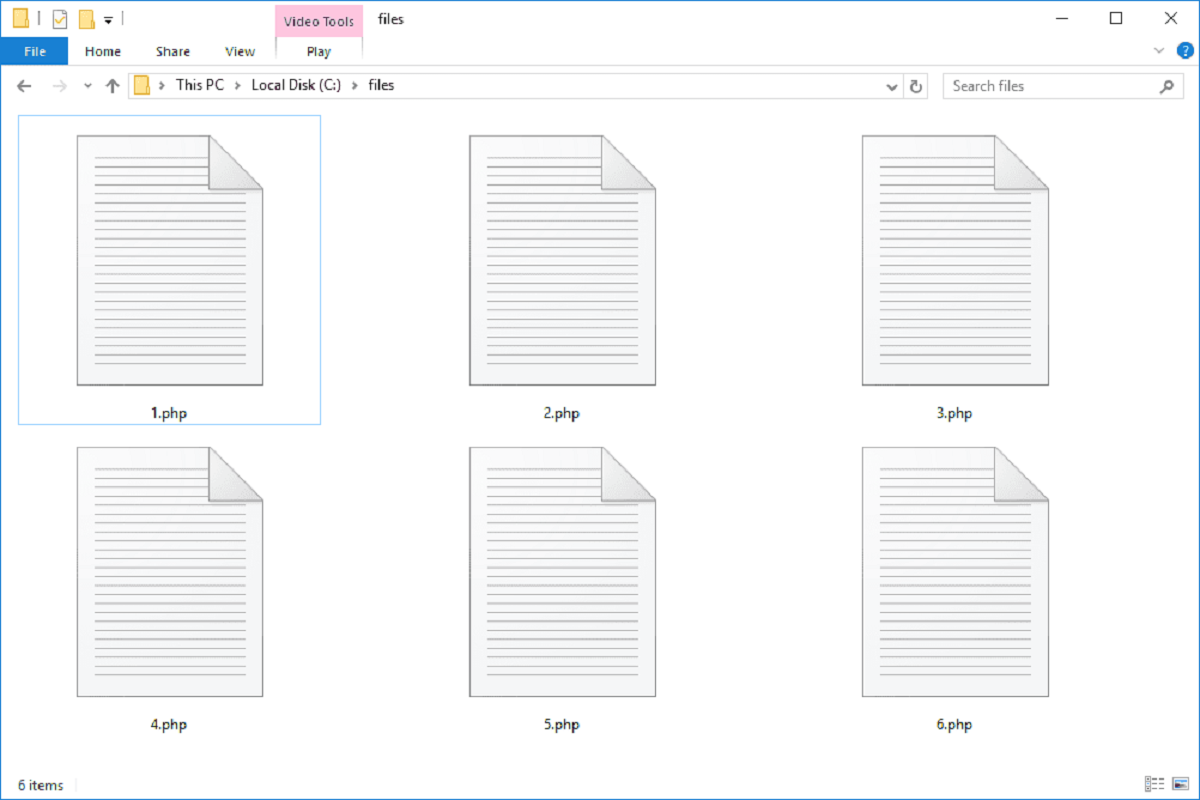Introduction
When you open a web browser and type in a website address or click on a link, a complex series of interactions takes place behind the scenes to bring the web page to your screen. This seamless process involves the browser communicating with a web server to request and receive the necessary data to display the webpage. Understanding how this interaction occurs is crucial to gaining insight into the functioning of the internet and the role of browsers and web servers.
In this article, we will delve into the intricate dance between a browser and a web server, exploring the step-by-step process of how a browser interacts with a web server to retrieve and render web pages. By unraveling this process, we can gain a deeper appreciation for the technology that powers our online experiences.
So, let's embark on a journey through the inner workings of the internet, where we will uncover the magic that happens every time we click a link or enter a web address into our browsers. Get ready to discover the fascinating world of HTTP requests, web server processing, HTTP responses, and the rendering of web content in your browser.
Understanding the HTTP Request
When you enter a web address into your browser or click on a link, a crucial process is set into motion: the generation and transmission of an HTTP request. This request serves as the browser's way of asking the web server for the specific web page or resource you want to access.
The HTTP request contains essential information that the web server needs to fulfill the browser's request. This information includes the type of request being made, such as retrieving a web page, submitting form data, or fetching an image or video. Additionally, the request includes the specific URL or web address being accessed, allowing the server to identify the desired resource.
Furthermore, the HTTP request may also contain additional details, such as headers that convey information about the browser, the types of content it can accept, and any cookies or authentication credentials that need to be sent to the server.
As the HTTP request is prepared, it undergoes a process of encapsulation, where it is packaged into a format that can be transmitted over the internet. This encapsulation involves converting the request into a series of data packets that can traverse the network and reach the intended web server.
Once the HTTP request is fully prepared and encapsulated, it is transmitted from the browser to the web server using the underlying network protocols, such as TCP/IP. This transmission involves routing the request through various network devices, including routers and switches, until it reaches the web server that hosts the requested resource.
Upon arrival at the web server, the HTTP request is unpacked and processed to determine the appropriate action to take. This may involve accessing the requested web page, executing server-side scripts, or retrieving data from a database, depending on the nature of the request.
In essence, the HTTP request serves as the initial communication between the browser and the web server, laying the groundwork for the subsequent steps in the process of retrieving and rendering web content. Understanding the intricacies of this request is fundamental to comprehending the underlying mechanics of web interactions and the seamless delivery of online experiences.
Processing the Request on the Web Server
Upon receiving the HTTP request from the browser, the web server embarks on a crucial phase: processing the request to fulfill the browser's needs. This process involves a series of intricate steps that enable the server to identify, retrieve, and prepare the requested web content for transmission back to the browser.
The web server begins by parsing the received HTTP request to extract essential details, such as the requested URL, the type of request being made (e.g., GET, POST), and any additional parameters or data accompanying the request. This parsing allows the server to discern the specific resource or action being sought by the browser.
Following the parsing of the request, the web server leverages its internal configuration and logic to determine the appropriate course of action. This may involve locating the requested web page within the server's file system, executing server-side scripts or programs, interfacing with databases to retrieve dynamic content, or handling form submissions and data processing.
In the case of static content, such as HTML files, images, or CSS stylesheets, the web server can swiftly locate and retrieve the requested resource from its storage, preparing it for transmission back to the browser. Conversely, when dealing with dynamic content, the server may need to execute scripts or interact with external systems to generate the required data for the response.
Furthermore, the web server may apply additional processing steps, such as authentication and authorization checks, to ensure that the browser has the necessary permissions to access the requested resource. This involves validating user credentials, checking access control lists, and enforcing security measures to safeguard sensitive content.
Once the necessary processing steps have been completed, the web server assembles the HTTP response, encapsulating the requested web content along with relevant headers, status codes, and any additional metadata. This response is meticulously crafted to adhere to the HTTP protocol standards, ensuring seamless communication with the browser.
In essence, the processing of the request on the web server represents a pivotal phase where the server interprets, retrieves, and prepares the requested web content, laying the groundwork for the subsequent transmission of the HTTP response back to the browser. This intricate process underscores the server's role as a responsive and dynamic entity, capable of catering to the diverse needs of browsers and users across the internet landscape.
Generating the HTTP Response
After meticulously processing the HTTP request, the web server embarks on the crucial task of generating the HTTP response, a pivotal step in the interaction between the server and the browser. This process involves assembling the requested web content, along with pertinent metadata, into a structured format that can be transmitted back to the browser.
The generation of the HTTP response begins with the inclusion of an appropriate status code, signaling the outcome of the server's processing of the request. Common status codes include 200 (OK), indicating a successful response, 404 (Not Found) for resource not found, and 500 (Internal Server Error) for server-side issues. This status code serves as a vital communication tool, allowing the browser to interpret the outcome of the request.
Furthermore, the HTTP response includes relevant headers that convey essential information about the transmitted content. These headers may specify the content type (e.g., text/html, image/jpeg), the length of the content, caching directives, and any server-specific details. Additionally, headers can communicate details about the server, such as the software being used and the date and time of the response.
Assembling the actual web content for transmission is a core aspect of generating the HTTP response. For static resources, such as HTML files, images, and stylesheets, the server includes the requested content within the response, ensuring that it adheres to the specified content type and encoding. In the case of dynamic content, the server may execute scripts or programs to generate the necessary data, which is then encapsulated within the response.
Moreover, the web server may incorporate additional elements into the HTTP response, such as cookies for session management, redirection directives to guide the browser to a different URL, and content negotiation details to facilitate language and encoding preferences. These elements enrich the response with functionality and flexibility, enhancing the browsing experience for users.
Once the HTTP response is meticulously crafted, it undergoes encapsulation, similar to the initial HTTP request, to prepare it for transmission over the network. This encapsulation involves converting the response into a series of data packets that can traverse the internet and reach the requesting browser.
In essence, the generation of the HTTP response represents the culmination of the web server's efforts to fulfill the browser's request, encapsulating the requested web content and relevant metadata into a structured format for seamless transmission back to the browser. This intricate process underscores the server's role as a responsive and dynamic entity, capable of delivering tailored web experiences to users across the digital landscape.
Receiving and Rendering the Response in the Browser
Upon transmitting the HTTP request and patiently awaiting the server's response, the browser eagerly anticipates the arrival of the meticulously crafted HTTP response. As the response traverses the network and reaches the browser, a pivotal phase unfolds, culminating in the rendering of the requested web content on the user's screen.
The browser promptly receives the incoming HTTP response, initiating the process of unpacking and interpreting the encapsulated data. The first step involves parsing the response headers to extract crucial details, such as the status code, content type, and any caching directives. The status code serves as a beacon, signaling the outcome of the server's processing, whether it be a successful retrieval (e.g., 200 OK) or an error condition necessitating further action.
Following the interpretation of the headers, the browser proceeds to process the actual web content encapsulated within the response. For static resources, such as HTML documents, images, and stylesheets, the browser meticulously decodes and renders the content according to the specified content type and encoding. This rendering involves parsing the HTML structure, fetching external resources, and applying styles to create the visual representation of the web page.
In the case of dynamic content, the browser may execute embedded scripts, such as JavaScript, to further enhance the interactivity and functionality of the rendered web page. These scripts enable dynamic updates, form validation, and the manipulation of the Document Object Model (DOM), enriching the user experience with responsive and interactive elements.
Moreover, the browser diligently processes any additional elements included in the HTTP response, such as cookies and redirection directives. Cookies are stored and managed to facilitate session persistence and user authentication, enabling personalized and seamless interactions with web applications. Redirection directives guide the browser to alternate URLs, ensuring a smooth navigation experience for users.
As the browser meticulously renders the received web content, it also leverages caching mechanisms to store elements locally, optimizing subsequent visits to the same web page. This caching strategy enhances performance and reduces the need for redundant requests to the web server, contributing to a more responsive and efficient browsing experience.
In essence, the process of receiving and rendering the HTTP response in the browser represents the culmination of the intricate interaction between the browser and the web server. This phase underscores the browser's role as a versatile and dynamic platform, capable of interpreting, rendering, and enriching web content to deliver immersive and interactive experiences to users across the digital landscape.

























